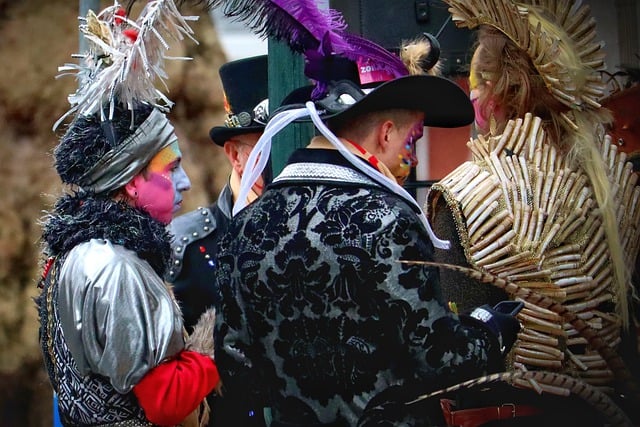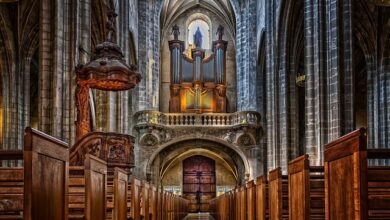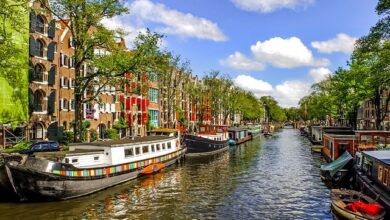Traditional Dutch Festivals and Cultural Events

The Netherlands is a country rich in history, culture, and tradition, celebrated through a vibrant array of festivals and events that reflect its unique heritage. From lively carnivals to solemn religious observances, and from flower parades to maritime celebrations, Dutch festivals offer something for everyone. These events not only showcase the country’s cultural diversity but also provide an opportunity for locals and visitors alike to immerse themselves in Dutch traditions, food, music, and community spirit. Below, we explore some of the most iconic and traditional Dutch festivals and cultural events.
1. King’s Day (Koningsdag)
Date: April 27
Location: Nationwide
King’s Day is one of the most beloved national holidays in the Netherlands, celebrating the birthday of King Willem-Alexander. The entire country turns orange (oranje )—the color of the Dutch royal family—and streets come alive with festivities.
- Activities:
- Street markets (vrijmarkt ), where people sell second-hand goods.
- Live music performances in cities like Amsterdam and Utrecht.
- Canal parties and boat parades in water-filled cities.
- Traditional games, such as sack races and tug-of-war.
- Cultural Significance: King’s Day fosters a strong sense of national pride and unity. It’s a day when the Dutch celebrate their monarchy, community, and shared identity.
2. Carnival (Carnaval)
Date: February/March (before Lent)
Location: Southern Netherlands, especially Maastricht, Eindhoven, and Tilburg
Carnival, known locally as Carnaval , is a raucous celebration rooted in Catholic tradition, primarily observed in the southern provinces of North Brabant and Limburg. It’s characterized by parades, costumes, and revelry.
- Activities:
- Elaborate parades featuring floats, dancers, and musicians.
- Costume contests and themed parties.
- Street festivals with live music, food stalls, and beer tents.
- Mock “takeover” of towns by carnival “princes” or “councils.”
- Cultural Significance: Carnival marks the period before Lent, a time of indulgence before the fasting season. It reflects the region’s Catholic roots and is deeply ingrained in local folklore.
3. Sinterklaas (St. Nicholas’ Eve)
Date: December 5
Location: Nationwide
Sinterklaas is a cherished Dutch tradition honoring Saint Nicholas, the patron saint of children. It’s celebrated with gift-giving, poems, and treats, and it predates many modern Christmas customs.
- Activities:
- Arrival of Sinterklaas by steamboat from Spain in mid-November (Intocht van Sinterklaas ).
- Children placing shoes near the fireplace or door in hopes of receiving small gifts.
- Families exchanging presents accompanied by humorous poems.
- Cultural Significance: Sinterklaas emphasizes kindness, generosity, and family bonding. While similar to Santa Claus, Sinterklaas has distinct characteristics, including his red bishop’s robes and helper, Zwarte Piet (Black Pete), whose role has sparked debates about cultural sensitivity.
4. Keukenhof Flower Festival
Date: March–May
Location: Lisse
The Keukenhof Gardens host one of the world’s largest flower exhibitions, showcasing millions of tulips, hyacinths, and daffodils in full bloom. This event highlights the Netherlands’ reputation as a global leader in floriculture.
- Activities:
- Strolling through meticulously designed gardens.
- Attending flower shows and horticultural demonstrations.
- Participating in guided tours or cycling routes around the bulb fields.
- Cultural Significance: The festival celebrates the Dutch love for flowers and their historical connection to trade and agriculture. Tulips, in particular, symbolize prosperity and innovation.
5. Liberation Day (Bevrijdingsdag)
Date: May 5
Location: Nationwide
Liberation Day commemorates the end of World War II and the freedom regained by the Netherlands on May 5, 1945. It follows Remembrance Day (Dodenherdenking ) on May 4, which honors fallen soldiers and victims of war.
- Activities:
- Free outdoor concerts and festivals in major cities.
- Speeches by politicians and dignitaries.
- Fireworks displays and torchlight processions.
- Cultural Significance: Liberation Day underscores the importance of peace, democracy, and human rights. It serves as a reminder of the sacrifices made during wartime and the value of liberty.
6. Scheveningen International Kite Festival
Date: August/September
Location: Scheveningen Beach
This colorful kite festival attracts enthusiasts from around the globe who gather to display their creations against the backdrop of the North Sea.
- Activities:
- Giant kites shaped like animals, mythical creatures, and abstract designs.
- Workshops for children and adults to learn kite-making techniques.
- Nighttime kite displays illuminated by LED lights.
- Cultural Significance: The festival promotes creativity, environmental awareness, and international cooperation. It also highlights the Dutch affinity for open skies and coastal landscapes.
7. Amsterdam Gay Pride
Date: Late July–Early August
Location: Amsterdam
Amsterdam Pride is one of Europe’s largest LGBTQ+ celebrations, drawing hundreds of thousands of participants each year. It’s renowned for its inclusive atmosphere and spectacular events.
- Activities:
- Canal Parade (Boat Parade ), featuring elaborately decorated boats cruising along Amsterdam’s canals.
- Street parties, drag shows, and dance events.
- Advocacy workshops and discussions promoting equality and acceptance.
- Cultural Significance: Pride reflects the Netherlands’ progressive stance on LGBTQ+ rights and its commitment to diversity and inclusion. It’s both a celebration and a platform for activism.
8. Oerol Festival
Date: June
Location: Terschelling Island
Oerol is an innovative arts festival held on the picturesque Wadden island of Terschelling. It combines theater, music, visual arts, and nature in a unique setting.
- Activities:
- Outdoor performances using the island’s natural environment as a stage.
- Interactive installations and workshops.
- Guided walks exploring the island’s flora and fauna.
- Cultural Significance: Oerol highlights the relationship between art and nature, encouraging sustainable practices and creative expression. It draws artists and audiences from across the globe.
9. Cheese Markets
Date: Spring–Summer
Location: Alkmaar, Gouda, Edam, Hoorn
Cheese markets are historic events where traditional Dutch cheeses are weighed, traded, and celebrated. They take place in charming market squares and feature ceremonial rituals.
- Activities:
- Watching cheese carriers (kaasdragers ) transport wheels of cheese on wooden stretchers.
- Sampling local cheeses and other regional specialties.
- Exploring nearby museums dedicated to cheese-making history.
- Cultural Significance: Cheese markets pay homage to the Netherlands’ agricultural heritage and its status as a leading exporter of dairy products. They’re a delightful blend of commerce and tradition.
10. Sail Amsterdam
Date: Every Five Years (Next in 2025)
Location: Amsterdam
Sail Amsterdam is a maritime extravaganza featuring tall ships, naval vessels, and classic yachts from around the world. It’s one of the largest nautical events globally.
- Activities:
- Boarding tours of historic ships.
- Naval parades and fireworks over the harbor.
- Maritime-themed exhibitions and activities.
- Cultural Significance: Sail Amsterdam honors the Netherlands’ seafaring legacy and its strategic position as a hub for international trade. It attracts sailors, historians, and families alike.


